Today Italian trainer company Elite joined in on the 2016 Trainer announcements bandwagon with the unveiling of four new indoor training products, including one set of rollers.
These announcements marks not just new trainers, but most notably a cleaner and simpler product line going forward. In past years the company has had more than 15 trainers at a time, often with similar and confusing model names. However the names this year are much easier to keep straight, and the product line both technically and price-wise is rather competitive with other offerings both in the market and recently announced.
The three trainers span three different price ranges and key feature sets:
Drivo Trainer: $1,299/€1,390/£1,099 – Top-end resistance controlled trainer, complete ANT+ FE-C/BLE control and broadcasting
Kura Trainer: $999/€850/£649 – Direct drive fluid trainer, transmits ANT+/BLE data, but no resistance control
Rampa Trainer: $599/€550/£449 – Mid-range trainer with ANT+/BLE data transmission, and ANT+ FE-C control
While the new Quick Motion rollers aim to simplify their existing roller lineup with something much easier to pack away. But more on that later.
If you want the overview of everything, I put this together while I was visiting them at their headquarters last month. It covers the major points on each product – and also lets you hear how things sound on the Drivo trainer:

Let’s dive right into things!
Drivo & Kura Trainers:
(Note: The photos I took depict prototype units, meaning, they don’t have final shells/cases on them yet.)
The Drivo trainer (pronounced Drive-O) will now be Elite’s top-end direct drive offering, while the Kura is their mid-range direct drive offering. The Drivo builds on the previous Elite Real Turbo Muin B+ with complete resistance control. The unit allows for that control via both ANT+ FE-C, as well as Bluetooth Smart. This means that you can use either Elite apps, or any 3rd party apps (i.e. Zwift, Trainer Road, Kinomap, PerfPro, etc…). While the Kura lacks the resistance control but is otherwise fairly similar (details on differences in a moment). The two trainers look incredibly similar from the outside. Here’s the final renders of what they’ll look like:
In addition to enabling ANT+ FE-C trainer control on the Drivo, both units also broadcasts ANT+ Speed, Cadence, Power, as well as Bluetooth Smart Power and Speed/Cadence. All of these are done via standardized protocols. This is useful if you have a bike computer or watch and just want to record the trainer data directly on that.
Now unlike previous Elite trainers these units have been designed to be a bit easier to move around and store. The leg folds up, allowing you to both carry it easily as well as store it a bit easier. Past designs were basically like moving around a dead body, so this is much appreciated. Of course like most others in this category, the trainer is still nice and heavy at 20KG/44lbs.
Elite has made some changes when it comes to the mechanics of the unit. First is that it adopts the faster power shifting functionality rolled out in a firmware update this winter. But more than that, is that the Drivo has a 6KG (13.2lbs) flywheel that is using a new two-belt drive system. That results in a claimed inertia feeling nearly double the actual flywheel size. As trainer connoisseurs know – flywheel weight can be a major factor in how ‘road-like’ a trainer feels. Of course, one should keep in mind that trainers like the Tacx NEO can accomplish similar results with their ‘virtual flywheel’ concept. Note that the Kura has a slightly smaller flywheel at 5.1KG (11.22lbs).
Between the two units, the Kura surrounds the flywheel in fluid, like the past Turbo Muin & Turbo Muin smart. The idea behind this is a bit smoother resistance responsiveness (since this unit isn’t electronically controlled).
As with most direct drive trainers from Elite, Tacx, and CycleOps, you’ll need to add your own cassette to it. The cassette is the silver cog part your chain attaches to in the back. The Drivo supports Shimano & SRAM 9/10/11 speed cassettes out of the box. But can also be used with Campagnolo cassettes with an adapter. Both units are compatible with 130-135x5mm quick releases, as well as 142x12mm thru-axles.
When it comes to noise, the unit isn’t as quiet as the more expensive Tacx NEO. Though, it’s quieter than the KICKR and maybe quieter than the CycleOps Hammer (I’d have to hear them side by side to decide). You can hear the audio within the video above at the 5:15 marker.
Now what’s definitely notable about both the Drivo and the Kura is the inclusion of an actual power meter into the unit. This is somewhat rare in that many trainers calculate the power based on speed or other metrics. But in this case here these two new units are claiming a tolerance of +/- 1% accuracy. While at their facility I did get the chance to see both the measurement system as well as the calibration system fully taken apart. Note that accuracy for both units has been tested by the company up to 2,000w @ 30KPH. They’re working to update their testing machines to go beyond that power value, but for the beta units, that’s the benchmark they’re working against.
Below is the power meter housed within these two trainers:
You’ll remember one of the major concerns I had with the previous Elite Real Turbo Muin B+ was the lack of accuracy of the unit. Simply put: I just couldn’t get accurate power numbers since it was calculated and not measured. This change should go a long way towards resolving that. I’m certainly looking forward to doing my own power measurement tests once the time comes.
Update: Here’s the quick video I shot of the Kura/Rampa calibration machine in action:

In the meantime, they demonstrated this using the ANT+ testing suite along with another power output device made by a Lorenz Sensors, a German company. The upper right number is the output power from that unit, while the lower left number is the power meter within the Drivo displaying the measured power. I’ve got a video of this showing it being changed on demand, which I’ll try and get published shortly.
Here’s the key differences between the two units, in a simple side by side comparison chart. Note that you can compare all trainers within my complete product comparison tool here:
| Function/Feature | Elite Drivo | Elite Kura |
|---|---|---|
| Copyright DC Rainmaker - Updated May 11th, 2021 @ 3:56 am New Window | ||
| Price for trainer | $1,199 | $999/€850/£649 |
| Trainer Type | Direct Drive (no wheel) | Direct Drive |
| Available today (for sale) | Yes | Yes (shipping Summer 2016) |
| Availability regions | Global | Global |
| Wired or Wireless data transmission/control | Wireless | Wireless |
| Power cord required | Yes | No |
| Flywheel weight | 13.2lbs/6kg | 11.22lbs/5.1KG | Resistance | Elite Drivo | Elite Kura |
| Can electronically control resistance (i.e. 200w) | Yes | No |
| Includes motor to drive speed (simulate downhill) | No | No |
| Maximum wattage capability | 2,296w @ 40KPH / 3,600w @ 60KPH | 2,000w+ |
| Maximum simulated hill incline | 24% | N/A | Features | Elite Drivo | Elite Kura |
| Ability to update unit firmware | Yes | Yes |
| Measures/Estimates Left/Right Power | Paid option (9EUR) | No |
| Can directionally steer trainer (left/right) | No | No |
| Can simulate road patterns/shaking (i.e. cobblestones) | No | No | Motion | Elite Drivo | Elite Kura |
| Whole-bike physical gradient simulation | No | |
| Can rock/tilt side to side (significantly) | No | Accuracy | Elite Drivo | Elite Kura |
| Supported accuracy level | +/- 1% | +/- 1% | Trainer Control | Elite Drivo | Elite Kura |
| Allows 3rd party trainer control | Yes | No |
| Supports ANT+ FE-C (Trainer Control Standard) | Yes | No |
| Supports Bluetooth Smart FTMS (Trainer Control Standard) | Yes | No | Data Broadcast | Elite Drivo | Elite Kura |
| Transmits power via ANT+ | Yes | Yes |
| Transmits power via Bluetooth Smart | Yes | Yes | Purchase | Elite Drivo | Elite Kura |
| Amazon | Link | N/A | DCRainmaker | Elite Drivo | Elite Kura |
| Review Link | Link | Link |
Note that the final max wattage numbers are still being determined as the product is finalized. But rest assured, unless you’re on a pro tour team, it’s unlikely they’ll matter to you. It’s not an area I’ll be able to test. My legs fail far before that point.
(*Random Nitpickers Corner: Some have recently debated what truly counts as a ‘direct drive’ trainer. On one side, a few have argued that ‘direct drive’ means there are no belts used within the trainer, but rather that the chain directly drives the flywheel. While others use the more traditional understanding among all trainer companies that it’s anything where the wheel is missing from action. Given no such standards body exists for what is essentially a marketing term, I’m going with the majority on this one – which is to say any trainer that lacks your bike wheel is direct drive. Well, until proven otherwise.)
Rampa Trainer & Quick Motion Rollers:
Next we’ve got up the Kura & Rampa trainers. No matter how you pronounce them, both of these sit as mid-range options within Elite’s lineup. Except unlike the Drivo/Kura – the Rampa isn’t direct drive, but instead is wheel-on.
And obviously, with the Quick Motion Rollers, your wheels are on there too (else your trainer ride is going horribly wrong).
Now you may be wondering – with prices kinda-sorta in the same ballpark, how is the Rampa trainer different than that of the Kura? Aside from lack of direct drive, there’s one feature: The cheaper Rampa has ANT+ FE-C control, whereas the Kura doesn’t. This meant that you basically have to choose between resistance control on the Rampa, or a more road-like feel on the Kura. Or you save more pennies for both of them within the Drivo.
Essentially the Rampa is like the Wahoo KICKR SNAP. Sorta same-same, but different. For example, both trainers transmit ANT+ & Bluetooth Smart, though the Rampa also transmits out ANT+/Bluetooth Smart speed and cadence (+ power), while the KICKR SNAP only does speed and power. For most people that’s not a huge decision point, but it’s worthwhile noting.
The Rampa’s magnetic resistance unit has a slope simulation of up to 10% – the same as the Wahoo KICKR SNAP.
And both units require them to be plugged into an outlet for operation (whereas something like the Tacx Bushido Smart doesn’t). So to recap on the Rampa:
– Has ANT+ FE-C trainer control
– Has ANT+ Speed/Cadence, and Power transmission
– Has Bluetooth Smart Speed/Cadence, and Power transmission.
– Simulates slopes up to 10%
– Works on wheel sizes 24” to 29”
– Priced at $549/€550/£449
– Is black and white with a red handle (obviously important for stylistic matching to your bike)
I don’t have a ton of other finalized spec details yet on the Rampa, so check back as they get a bit closer there.
Lastly, a brief mention on the new Quick Motion rollers. These rollers will ONLY be available outside of the United States, due to various patent ‘challenges’ within the US. Which is unfortunate, because the fold-up design is pretty darn cool.
This new roller version allows you to go all Brompton bike on your rollers, folding it in half. I included a snippet of it within my video of the folding magic.
The rollers don’t natively transmit ANT+ or Bluetooth Smart power, but you can buy the small Misuro B+ accessory pod (roughly $50), which will then enable transmission of both of those. That pod can be seen here:
Said pod also has a brief cameo in my video. Because everything has a cameo in my video.
Since the Quick Motion isn’t available in the US, there’s only Euro & GBP pricing, which is: €450/£349. I don’t typically review rollers, simply because I’m not a huge roller guy. But the fold-up aspect kinda appeals to me, as most other rollers just take up far too much darn space.
Wrap-Up:
Overall Elite’s 2016 line-up is looking pretty solid. I think the winners here are the Drivo & Rampa, which are priced quite competitively. I think the Kura may be in a bit of an odd-spot price-wise, merely because it’s a tough trade-off between having resistance control and direct drive. I suspect most consumers in this age of Zwift and TrainerRoad popularity will choose resistance control (Rampa) over standalone direct drive (Kura). Which isn’t to discount the minority that will select road-like feel, rather, simply to point out the shift in the market. Yet at the same time, having a power meter within the Kura is no doubt a selling point for those that might not care about automated resistance control.
I’m really interested to dig in and test the Drivo’s accuracy, especially combined with the recent firmware changes to the Elite lineup that make power change responsiveness much faster than in the past. I could see those two tweaks, along with the more open ANT+/BLE support added in the Drivo definitely making it a solid contender in the hotly contested high-end trainer range. Between the recently announced CycleOps Hammer and this, consumer choice is really opening up.
I’ll be looking to do an in-depth review of at least the Kura, if not the Rampa, at some point this summer once I have a final production unit in my hands (or rather, in the DCR Cave). So stay tuned for that! And thanks for reading!
—
Update: You can now pre-order the Elite Rampa, Kura, and Drivo from Clever Training for delivery later this summer. You can combine that with the DCR Coupon code of DCR10BTF, which gets you 10% off. Additionally, you’ll get free US shipping. Doing so supports the site and makes you awesome. Note that Clever Training will only charge your card upon shipping.


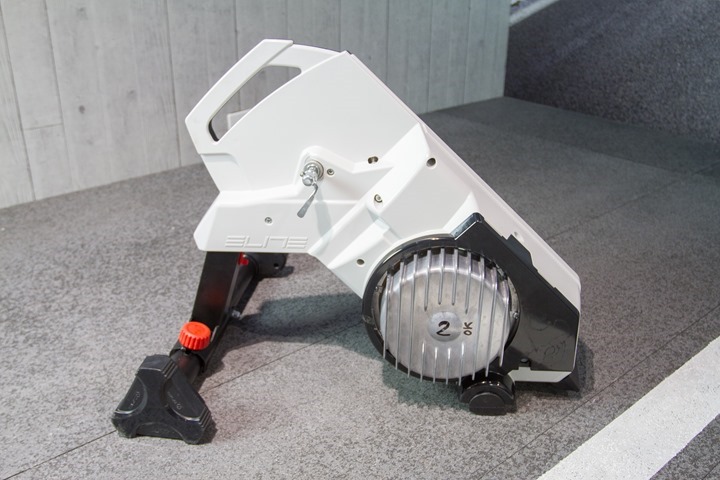


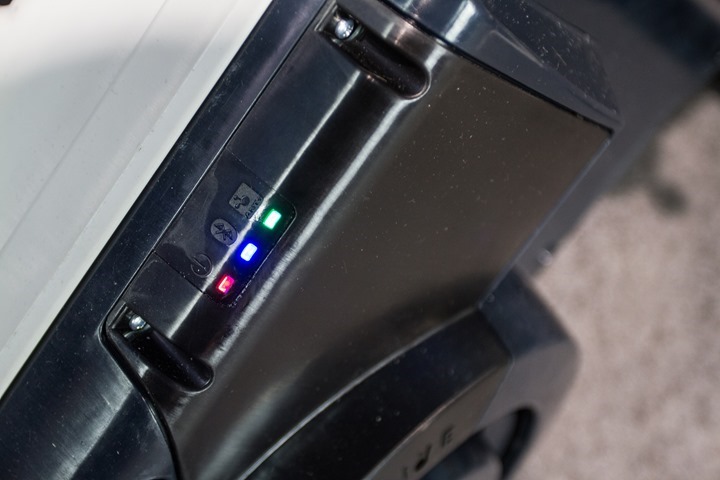
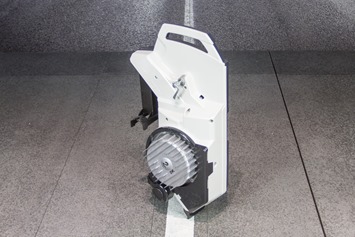
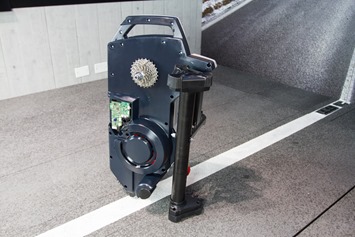
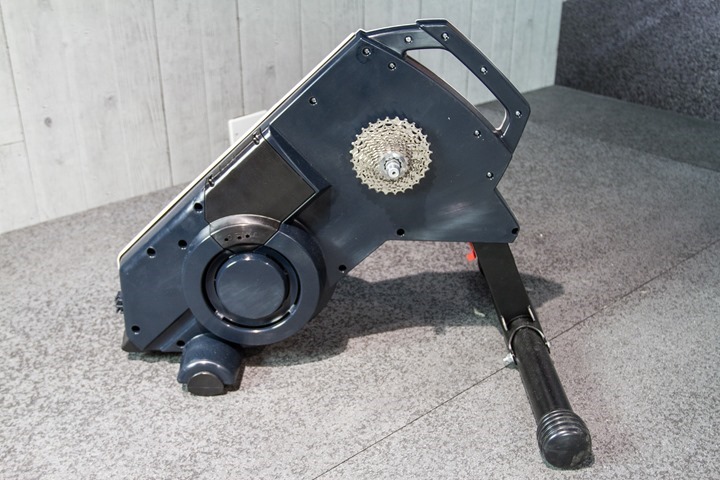
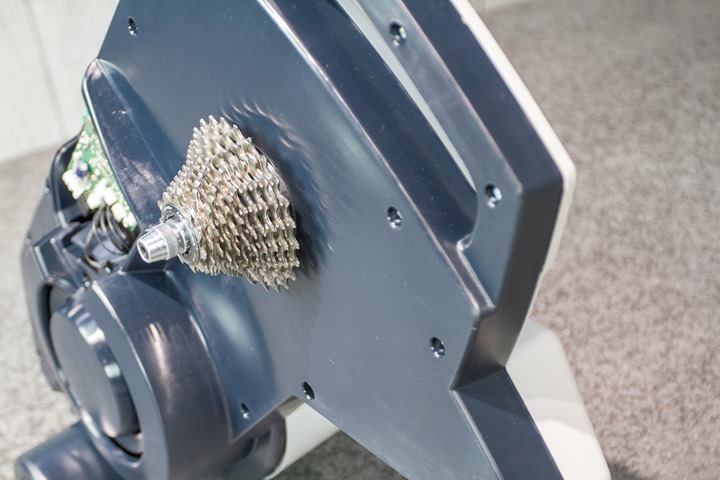
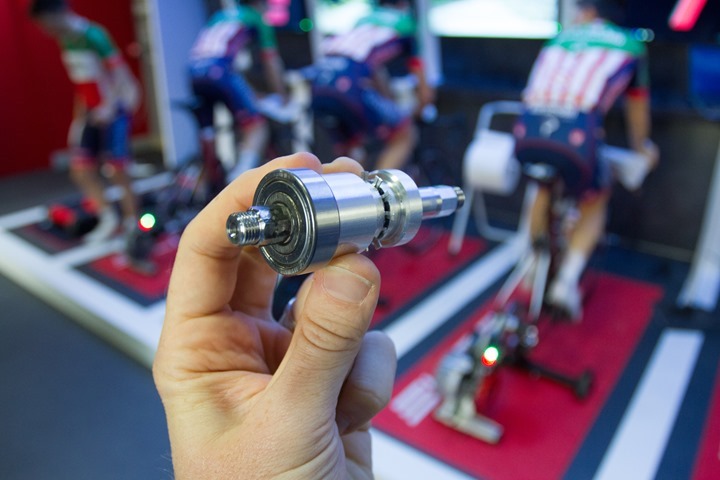
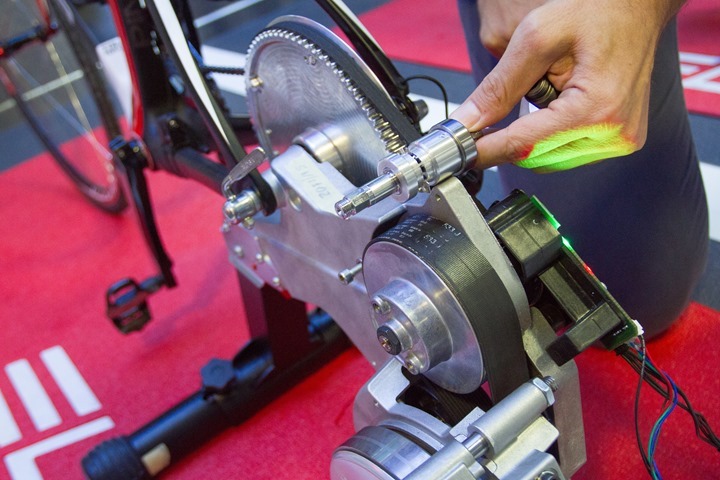

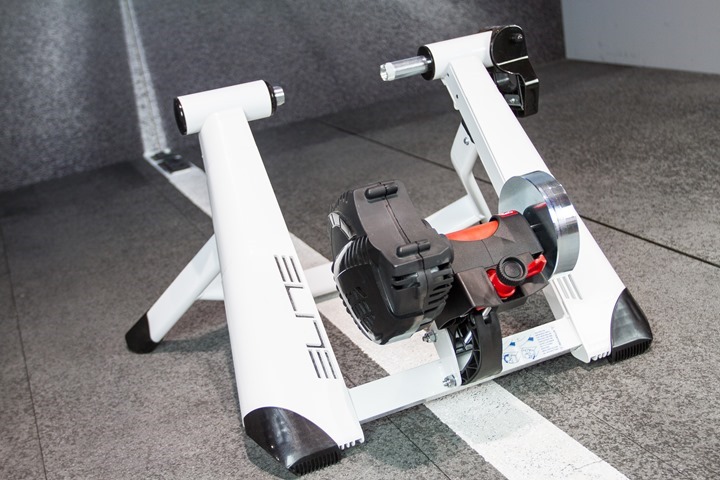
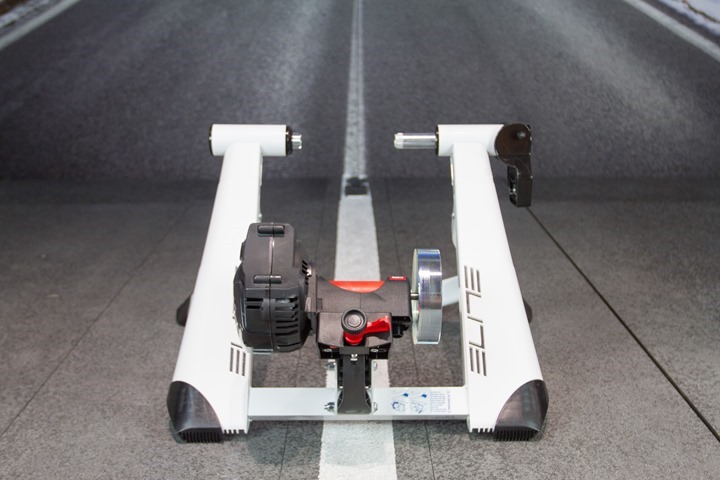
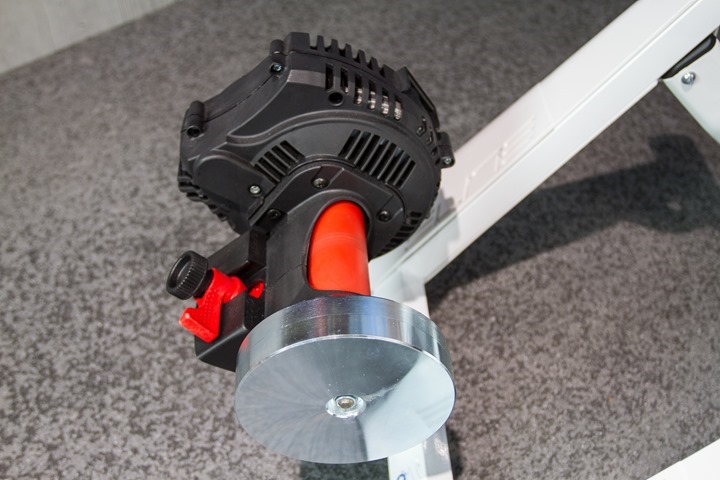
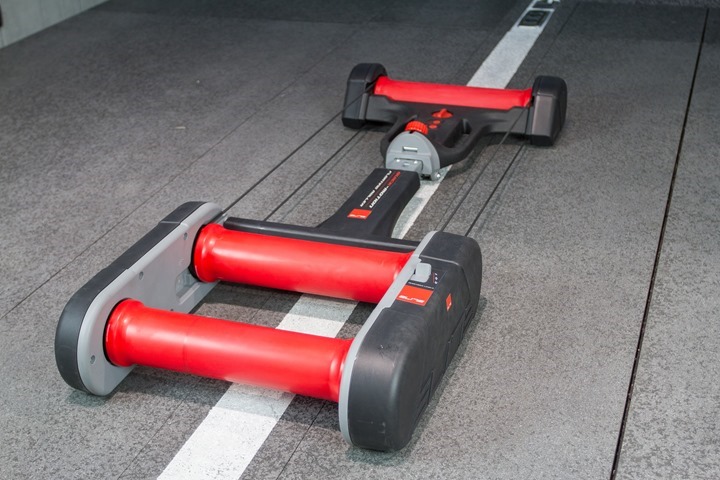
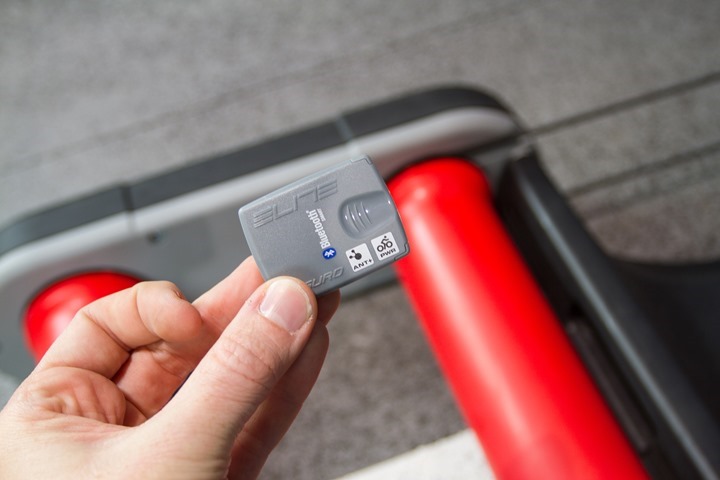
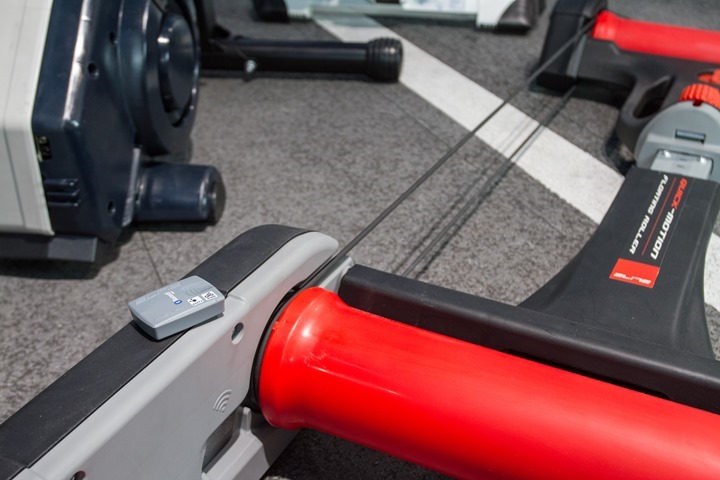
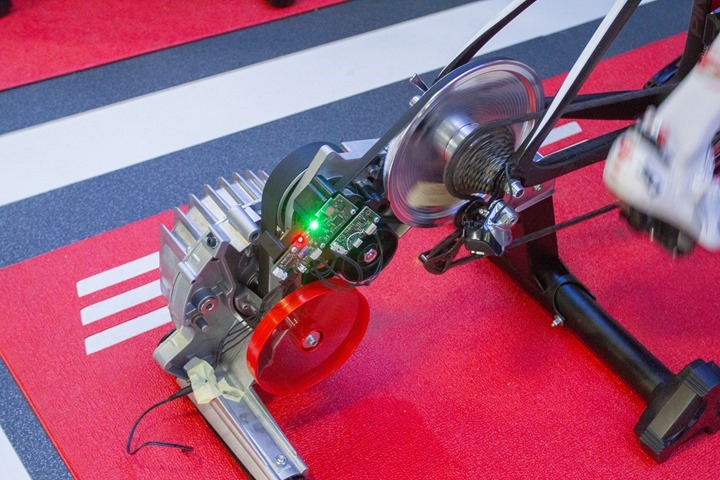



















Do the rollers have FE-C support?
Not the Quick Motion ones, as they don’t control resistance (just transmitting data).
In the past, Elite has been hostile toward Mac users. Has anything changed on that front?
They’ve also rolled out apps on Android and iOS, which is a bit where their focus is.
I think in general if we look at trainer companies, they’re realizing that they really don’t want to be in the app business. An entire new segment (Zwift/TrainerRoad/Virtual Trainer/etc…) has popped up that can do that far better across numerous platforms.
I’d be really surprised if we fast forward 3-5 years and any of these trainer companies make apps anymore (aside from very simple things like firmware updating, sensor tests, and basic wattage/resistance control app).
Looks like some pretty cool sh@t…
Interesting to hear your experience once you try the Drivo&Kura models…is that happening soon?
It sounded like hopefully the end of June or early July.
Of course, that converted into “Elite time” may mean late summer!
Interesting model names… “Kura” is in Finnish “mud”, and is sometimes used to describe poor product: “se on täyttä kuraa” means about same as “piece of junk”. And then “rampa” means in Finnish “cripple”. :)
For every word in any language, you can find some other language in this world where the same sounding word is something dirty or bad.
The model names/words actually come from the phonetics of our local (alias Veneto) dialect.
What we truly intend is Kura = Accurate (in reference to the power readings) and Rampa = Slope (in reference to the 10% slope simultion for this wheel-on model).
Are the axle ends where the dropouts rest smooth or threaded. I don’t like the idea of the Kickr’s threaded axles grinding into my CF dropouts. I haven’t seen the new Cycleops direct drive trainer but from pix it looks like those are smooth.
Finally Elite properly calibrating their trainers power readings.
And…to go with your comment, I just uploaded/added to the post the calibration system video: link to youtube.com
Misuro B+ Ant+ power transmission @ 50$ seems oddly priced for a “power meter” even if it just fits one device, is this sort of like that Kurt Kinetic pod?
I love my Vortex Smart, surprised at no comparison to the Rampa.
Yup, exact same concept at Kinetic pod.
Indeed, the Vortex Smart is in the same ballpark. I was going to get the Rampa into the comparison tables and add that up there along with the Vortex Smart and KICKR SNAP.
Guess that explains why performance bike has Elite trainers 40% off this weekend
So I presume that means that the rollers are going to be using the same power measurement that you found flawed in the previous Elite trainers?
I just want a set of rollers that measure resistance! Though I guess just putting power on all my bikes in an option for that…
Actually, the rollers are a bit different than the other trainers – it’s different tech. The rollers are more akin to that of the Kinetic Inride in that it’s measuring rotations on a known power curve. So usually pretty predictable, depending on any warm-up aspect.
But I don’t know for the resistance changing rollers (a different product of theirs )how that works. I’ll ask the Elite folks if they can chime in on that.
Hi Ray,
Thanks for the reply and the info! I love rollers, and I’ve wondered before if it might just be best to bite the bullet on Garmin/PowerTap pedals and get good at swapping.
If you ever go riding in Germany, let us know!
Ryan
Hi Ray,
Do the quick motion rollers have a rocking mechanism like the real motion (and inside ride) rollers?
Thanks,
Alex
Hi Ray,
Great post as always. A bit of a broader question, the Kickr seemed to revolutionise the trainer market with direct drive (though obviously it wasn’t the first). What do you see or think will be the next big hardware revolution for trainers? Thanks again
So when will somebody make a direct drive trainer that is 142/148 thru-axle compatible AND will accept an XD driver body?
Hey Ray,
It seems that for the smart mid range group, the choice is between the Tacx vortex smart (now sub$400), kickr snap ($540 on sale at best) and the Rampa for about the same price. It seems that for the money one should go with the Tacx at the current pricing, don’t you think?
i would be interested in how well the different direct drive trainers with resistance control work for ‘stepped’ Vo2 max tests where wattage/resistance goes up in increments of X watts every Y seconds until exhaustion.
I don’t know why it appeals to me, but it does (i imagine it is hellish)
My impression based on ‘internet forum types’ is that trainers ability to do these varies significantly, i think because some take significantly longer to reach the new resistance than others.
Would be a a good metric to use in evaluation – “adjustment time between resistances”.
Personally I would prefer a unit that was resistance controllable but used an external power meter through Ant+, as unless someone has a trainer-only bike (or do not use a PM on the road) the on-board PM is somewhat redundant (and then there is the match-up between PMs to concern yourself with)
Look forward to your long form review.
No issues with those types of workouts, and pretty common use. Many use them for FTP/VO2 max tests, and in fact, they’re great for that since it’s very repeatable.
There’s almost no issues with resistance change time for this type of test. Some of Elite’s trainers in the past were a bit slow to change levels, but it wouldn’t actually impact this type of test since the increase is small (versus say 100w to 400w).
Given that the ramps for such tests should last at least one minute (and generally 2-3 minutes), any of these are fine. You are generally more concerned with the average wattage for each ramp, rather than instantaneous changes.
The Drivo and Kura look like vacuum cleaners.
Curious about the details on the patent challenge on the rollers- e.g., whose patents, what does it cover, etc.
We have a license agreement with Inside Ride from Portland, Oregon that allows us to use their patented Free Motion technology on our products and sell them worldwide with the exception of North America.
Thanks for replying! Elite is across town, that’s kinda funny.
These look like great products. I’ll be in the market for a smart trainer later this year (for the North American winter riding season), so I’m excited to see an in-depth review (operating sound levels, smoothness, etc…).
All the competition in the trainer market is really improving the products.
Great review Ray, as always helping us all out with decisions that we
probably treat far more importantly than they actually are.
Interested in your thoughts on the following, as i am heavily leaning towards the Kura – rather than your suggestion that most will choose the Drivo or the Rampa – favouring resistance control.
(bear in mind i don’t use a trainer currently – 30 minutes on one during a bike fit put me off for life – and would rather be out on winter roads … so instead invested in high quality winter clothing)…
Obviously i would *rather* have the Drivo, but for me the Main reason I would like resistance control, is to perform stepped vo2 max tests for fun – and i know that thee are likely not pleasant but i would find them interesting ….. but €450 is quite a premium for that ability.
I guess my main point, and my main question is;
– Wouldn’t using resistance control take away from “road feel”?
I can see how it would be useful for Swift users (drafting / climb simulation), but I would have thought for “road feel” training using trainer road, the Kura is ideal – and a great price point.
Thinking of getting a Kura to use with an old frame and shabby drivetrain
(that no longer goes outside the shed except in emergencies)
ps … looking forward to your accuracy tests for the built in PM and how it compares, which selfishly i hope you compare against a P2M : )
Thanks
Does the direct drive trainers make the Turbo Muins outdated or are the Muins still going to be sold along side these new trianers?
Turbo Muin and Turbo Muin Smart B+ remain in the range.
Did you made an comparison between the Elite Drivo and the Tacx Neo? What is your opinion about this the Elite Drivo against the Tacx Neo? Which one do you prefer? I’m a little bit confused, because I was for sure to buy the Tacx Neo but now I don’t know if the Elite Drivo would be the better one.
Thx
The only question I have is which one is quieter: Neo or this.
The Neo is quieter, hands down. But…it’s also $400 more. This is still really darn quiet, and just as solid-accurate.
I’ll be publishing my Drivo In-Depth review next week, and I’ll cover the differences between the NEO & Drivo in detail, including sound tests side by side.
“just as solid-accurate” …. really looking forward to your in-depth, and how Accuracy and Calibration Routine pan out. It def seemed “very quiet” in your traffic light video.
Claiming +/- 1% straight out the gate is impressed / ambitious, their marketing really plays on high precisism accuracy. I really hope it lives up to it. What PMs are you using to compare the outputs to?
I’m comparing against the PowerTap P1, Quarq Riken, and also a Stages for the heck of it. The accuracy claim was validated by a German testing company, I do have a copy of the certificate. But I’m working to get a tiny bit more clarity on the exact procedure (I have an outline of it, but not detailed specifics).
What’s the difference between the ‘new’ Rampa and the old ‘Qubo Digital Smart B+ ?
Except the price i don’t see much difference. The old Digital Smart even went to 16% resistance as opposed to 10% on the new Rampa.
on 18th August Mr Ray wrote …. “I’ll be publishing my Drivo In-Depth review next week, and I’ll cover the differences between the NEO & Drivo in detail, including sound tests side by side.”
I cannot contain myself much longer!
Sorry, I got slammed this past week with more pre-Eurobike prep than I expected. You’ll see the Drivo review up before Eurobike starts on Wednesday. So either Monday or Tuesday.
All the pics, video, data gathering, etc… is done. Just gotta put some word in between them all.
…me too interested in real difference between new Elite Rampa and Qubo Digital Smart B+ …any hint? Does the 100€ difference makes sense?
(sorry for poor english)
Thank you,
Chuck26
Rampa max 10% incline, Qubo Digital Smart B+ max 6% incline. Larger diameter roller on the Rampa so less rpms = less noise = less wear. Rampa “A” frame , Qubo Digital Smart B+ “compass frame”. Not sure what’s better…”A” frame is probably more stable (especially riding out of the saddle), “compass frame” more realistic. So the big difference IMO is the max incline. Is 6% enough for you? Go for the Qubo Digital Smart B+, otherwise it’s the Rampa.
Ray – any timing update on when we can expect the in depth drivo review?
Hi Ray, my local store has Drivo but can’t test it for now because only one. You are making in depth review soon?
Hi Ray!
regarding “both units also broadcasts ANT+ Speed, Cadence, Power, as well as Bluetooth Smart Power and Speed/Cadence.”
Is it the combined Speed and Cadence Ant+ och separate?
Hi Ray,
Any idea when the Drivo review will be available. I’m waiting on the review before I pull the trigger on this.
I’ll add to the list of readers waiting to see an in-depth on the Drivo.
12:01AM US Eastern time tonight (Thursday the 15th). Enjoy!
So, I’m about to buy a new trainer and undecided about the Tacx Vortex Smart and Elite Rampa.
Vortex seems better priced.
Does the Rampa has any advantage over the Vortex that justifies the price diff?
Kind regards,
Bart.
Wich one should i buy (low cost ones), i can’t decide :)
– Tacx Vortex Smart T2180 ~~ 350€
– Elite Rampa ~~ 390€
iomk, where did you find rampa with that price? the best i could find is about 480 euro in german online shops. at that price, i would rather get bushido, but at 390, it seems rampa is a better deal.
I finally bought Elite Rampa at 379€ (free shipping couse i’m from spain), you can find it here:
link to kitres.com
Wich one should i choose with this price ?
Tacx Vortex 359€
Elite Rampa 409€
Bkool Smart Pro 479€
My aim is to train 3 time a week following a program and to do one time a week an alpin climb just for fun (the bkool software seem to be the one I’ll go for)
Where did you find the rampa for 409€ ?
Elite rampa – euro 403 @ bike24.com
I’ve never purchased from this site/shop so am merely quoting from their website.
will there be a in-depth review of the Kura as mentioned in the article? If this is imminent, i’ll hold on with the purchase for a bit :)
What is the accuracy of Elite Turbo Muin Smart B+? I couldn’t find it anywhere.
Hi, I saw ypou mentioning the Elite Kura does not need a power cord to operate. I searched around and could not find anyone that actually comfirmed this. Wiggle and amazon also mention it but a real experiene would ease my mind.
Have you tested the Kura without it being connected to a power supply?
I just received a Kura today. I’ll do some power testing tomorrow against my SRM.
Things I’ve noted so far.
1. Yes,which means no, you do not need a power cable.It has a generator and a internal battery. If the battery does die completely you have a micro-usb port to charge it.
2. Unlike the Drivo which doesn’t have a calibration method. This does. They supposedly use the same power meter so I’m not exactly sure why this has a spin-down calibration and the Drivo does not.
I haven’t even set it up yet but I wonder if I will even need to calibrate and if it has something to do with warming up the fluid vs the Drivo’s more stable under differing temperatures magnetic resistance. In that case I wonder if once you calibrate it, warmed up it will be stable after 10 minutes and not have to do it again. Or maybe it’s there for piece of mind even though you’ll never need it. I know Drivo owners really wanted to calibrate theirs even if there was not a need. So maybe Elite just added the feature to stop getting phone calls and questions on how to do it. Maybe Elite can chime in on why?
I’m hoping it’s quiet.
I just received a Kura today. I’ll do some power testing tomorrow against my SRM.
Things I’ve noted so far.
1. Yes,which means no, you do not need a power cable.It has a generator and a internal battery. If the battery does die completely you have a micro-usb port to charge it.
2. Unlike the Drivo which doesn’t have a calibration method. This does. They supposedly use the same power meter so I’m not exactly sure why this has a spin-down calibration and the Drivo does not.
I haven’t even set it up yet but I wonder if I will even need to calibrate and if it has something to do with warming up the fluid vs the Drivo’s more stable under differing temperatures magnetic resistance. In that case I wonder if once you calibrate it, warmed up it will be stable after 10 minutes and not have to do it again. Or maybe it’s there for piece of mind even though you’ll never need it. I know Drivo owners really wanted to calibrate theirs even if there was not a need. So maybe Elite just added the feature to stop getting phone calls and questions on how to do it. Maybe Elite can chime in on why?
I’m hoping it’s quiet.
Hi Heith,
yes, Kura has a calibration procedure. It’s a spin-down calibration, exactly as for Drivo (in fact they share the same measurement system).
Performing calibration before or after warming of the oil affect the accuracy really very slightly. Of course for even higher accuracy, we suggest 10 minutes warmup before calibration.
How often to calibrate the Kura depends from how much do you use the trainer. If you really use the Kura a lot, then calibrate it once a month it’s enough.
Great news, I am looking forward to your experience with the kura. Enjoy!
Kura
1. It’s really accurate. That, we already knew from the Drivo. Also when skimming thru the owner’s manual it said to calibrate it. But after setting it up. There is no calibration.
2. Pedal analysis is really cool.
3. It’s really quiet. @300w it came out to 58db. That’s 10db quieter than the Kicker2(68) at 21mph and 8db than the Drivo(66) according to my meter from 2ft. away. I know speed to power isn’t apples to apples but this is a progressive trainer and I don’t think anyone can push 21mph on this for any length of time.
4. Not as rock solid stable as a Kickr. But, lighter than Kickr and Drivo so that’s nice.
5. It has a really steep power curve. Steeper than anything I’ve ever used. KK, CO fluid, Revolution, etc. @12.5mph it reads 188w(cold)on the SRM and It’s own power. After it warms up its around 182w@12.5. Here’s where gets crazy. at 17.5 mph its 375w.. Sprint work is what this thing is built for, you can even do stomps. Recover in the small ring at 9mph or so, then just bring it up to the big ring and pound away. For this, it’s better than anything on the market.
6. Road feel is OK considering the power curve.
Pro’s
-accurate power
-very quiet, closest thing to a Neo on the market right now.
-Pedal analyses
Cons
-Power curve is a bit much (Unless you’re just a sprint interval person, then it’s probably the best).
-Road feel could be better. Really it just needs a tamer power curve. Seriously 375w at 17.5 mph. Most people can probably do entire workouts in the small ring.
Kura: One more thing as I just threw my MTB on it. I didn’t even think of this till I was starring at the 12mm TA pieces that come with it.. This trainer is very good for MTBs without power meters. Because of the steep power curve, you can run 1×11 gears(34t) and still get good work in.
The power gradient has nore to do with the fluid used and is similar to the dumb Turbo Muin.
What works for Elite’s fluid based direct drive(I own the dumb Turbo Muin) is to have compact 50-34T on it. A front 53T will have big increase in resistance and you cant maintain the same comfortable cadence at your targetted power.
So for your Kura, you need a 50-34T front chainring especially for workouts above 250W.
Must controllable trainers come with an on board power meter? Is it viable to have a controllable trainer and having an external power meter on the bicycle controlling it’s resistance? Price could be lowered considerably i suppose without the on board power measurement in the trainer. What is your take on this?
They don’t have to. Some do, some doesn’t.
The Elite’s do – the accuracy is awesome. Meanwhile, Tacx Neo’s doesn’t, and the accuracy is equally as awesome.
I personally don’t care whether a unit does or doesn’t, as long as it’s accurate in the end.
Well, this is really confusing. if a controllable trainer does not come with a power meter on board, shouldn’t it be substantially cheaper?
Then it just needs to be calibrated to the external power meter and slopes/ERG from training programs in order to produce the right resistance, no?
BTW, I thought NEO has an on board power meter, so is Kickr.
And Im very sure the Real Turbo Muin does not, it just transmit power based on estimation and calibration values stored in its firmware.
I believe that Drivo is the only controllable trainer on the market with an integrated power meter. And I think it’s also in the non-controllable Kura trainer.
“Well, this is really confusing. if a controllable trainer does not come with a power meter on board, shouldn’t it be substantially cheaper?”
I think again it goes back to: Does it matter?
Does a power meter actually matter? One need only look at KICKR1 to see that it doesn’t, as KICKR2 has better accuracy without it (in part because the KICKR1 power meter was apparently susceptible to damage, causing accuracy issues).
Plus, there’s many other features besides power meter inclusion that drive price – such as grade simulation, sound levels, etc…
Well, I guess it also depends on how accurate the power meter is in measuring and how stable it is in time/with use.
So it seems Elite is going the opposite direction of Wahoo and the price of drivo is substaintially higher than RTM
In the case of Elite, perhaps it does. The estimated power from the RTM behaves differently in that the power is smoothed to almost like 10 secs. So of you stop pedalling and coast downhill, the power still shows whereas a power meter would almost immediately turn to 0watt. RTM estimated power would always show higher av power at the end of each session even when calibrated to an external power meter. I wonder if kickr2 behaves the same without an on board power meter..
The kickr2 with the beta firmware has a lower latency than any power meter with a accelerometer controlling cadence(stages, 4iiii, power2max)I’ve tested. The Drivo, kickr2, &kura are more reactive than these on zwift and on a graph. They are better for gaming. If you stop pedaling with a Stages in a group ride on Zwift it can take up to 4 seconds for zwift to react once you start pedaling again because of the latency. That can get you dropped. SRM although has 1 magnet it has 4 sensors inside so it grabs a reading every quarter rotation and powertap hubs are very fast because they don’t depend on cadence at all. But I’ve found the Kickr2, drivo, & kura to still be possibly faster as they pick up the slightest input. The light sensors on these trainers pick up the smallest accelerations and immediately transmit the data. They have better latency and pickup input that most on bike PM’s don’t even see. They are better for gaming without a doubt.
Technically speaking, Stages is going to be sampling faster and more frequently than SRM. They actually do that in their high-speed mode as well.
The differences you’re seeing between trainers and power meters doesn’t actually have to do with responsiveness (as all data I have shows PM’s respond quicker than virtually every trainer), but rather, the way the software side of trainer apps work. When a trainer app is controlling a trainer directly, it has zero additional sensors to check. Whereas when a trainer app is talking to a power meter and then telling a trainer what to do – it has more feedback loops to go through.
Of course, one should note that from an ANT+ standpoint, all of these devices are broadcasting at basically 1s. Of course, that doesn’t take into account how often they poll internally for power, which is usually in the range of 64+ times per second. Most devices though will send the message 2-4x for each second. It’s actually moderately interesting to watch on an ANT+ logger.
So the latency issues I’ve been seeing has more to do with Garmin and Zwift than the PM itself?. It’s weird that this exists. Not one of my accelerometer based pm’s can report initial power to a Garmin as fast as my powertap or srm. Especially from a stop start situation. I wonder if this will get fixed now that gaming had become an important part and reason for power meters.
In a nutshell, yes.
If you think about typical video game latency, you’re looking at latency (ping) rates of 50ms being good, and 150ms being ok. All of which is in the ballpark of 1/10th of a second. (1000ms = 1 second).
But with a power meter, using ANT+ or Bluetooth Smart, you’re only reporting power every one second. And that’s after the completion of one crank rotation or one second (depending on the type of power meter). So now you’re talking basically 1-2 seconds from the point your competitor applies power, plus internet transmission time, then your reaction time, then the 1-2 seconds for Zwift to see your power jump.
All of which makes it difficult to be as fast as in real-life. Perhaps power meter latency rates will change – though honestly I doubt it. The PM industry doesn’t seem to be that interested in moving forward many/any new standards/feautures.
Are you going to be doing a full review of the Rampa? Also, is there a way to have the trainer send power data to my Fenix 3 and Elite’s app at the same time? I tried that and as soon as I fired up the app it dropped from my watch.
I’ve just bought a Rampa.
First session was fiddling with the electronics and getting the app to talk to trainer etc. It’s ok, but some more guidance and clarity would be good.
Second session was using FE-C sufferefest session. I was enjoying the session, it felt easy, then it dawned on me…too easy. I ‘felt’ it was giving me about 30W I didn’t deserve. I upped the intensity to compensate, but it wasn’t as accurate as the watt bike I usually use (and given I’m in 100-200W power range, it’s a large error). Went away and did some reading about calibration etc..
Third session. – Decided to look at riding with elite app, still felt too ‘easy’ HR a lot lower than at equivalent Watts on Wattbike (I use several, so think the accuracy is with them). Did an ‘open 30’ ride to see what happened.
It seemed ‘easy’ and the cadence sensor was all over the place, even in a completely cadence and Watt steady session. Then about half way thought it all changed. The cadence stopped being weird, and the resistance went up, even though the Watts stayed the same. I wasn’t imagining it, my HR went up as well.
I’m not sure what’s going on..
You can see cadence in the pink line, and then red is the HR which rises after the change, and purple is the Watts that stay constant, and the top line is the speed which drops to a much more realistic level.
I bought the ramp as it is supposed to be accurate, but even in a single session like this it seems to do it’s own thing. I know some turbos calibrate after 10 mins, but i’d already done a lot of playing around with the elite app before this.
Further to the previous post, this is the strava image of ‘The wretched’ which I did as session 2 on the Elite Rampa.
The power output looks just like the sufferfest one, which suggests that the sufferfest app is controlling the ramp appropriately.
What looks really odd is the cadence variation, and the speed. (I’m not doping…and am not a fast cyclist..)
My HR all seems fine.
But look at the speed – the rampa is saying average 271KM/H, which seems a record….I’m not that fast…
Further to the rampa/sufferfest/strava graph – I realised this could of course be a sufferfest problem as well.
The Elite app seems to have a more realistic speed, when using it, so using elite app to strava directly it gives a much more sensible speed. (see pic). I don’t really like the elite app for training, for example it forces you to increase in 10W increments, when a smaller amount would be more appropriate sometimes.
I wouldn’t mind so much if strava didn’t count the ‘virtual miles’ or speed. I think it’s a rampa/sufferfest/strava issue somewhere….
Next task is to persuade Zwift and the Rampa to play together via ANT to IOS, which hasn’t worked yet..
In the owner’s instruction(page 19 English) under data transmission Elite explains you should set your tire size to 611mm instead of actual tire size 2095mm(normally) for the Kura and Drivo when not using their app. I wonder if the Rampa also needs a custom tire size.
Zwift doesn’t take speed into account at all from the unit.
Thanks Heith – there’s nothing in the Rampa manual about changing wheel size, but it sounds plausible..
How do you change it in the drivo manual? I can’t seem to find that manual online. There isn’t anything in the app that I can see that allows this to be changed.
Ian
You change it on the app or device you are using. So if your Garmin is reading speed wrong, you do it in the bike profile on the garmin. Perfpro, or trainer road, etc. in the user/athlete profile..
Hi Ian,
we confirm what Heith said. The Speed&Cadence protocols for both ANT+ and Bluetooth actually don’t send the speed but the rotation frequency detected by the sensor. Of course in this case, to calculate the speed the app/computer needs the relative circumference. In case of Rampa the sensor detects the rotation frequency of the roller and thus the relative circumference is 611mm.
The ANT+ FE-C protocol is different as it sends to the app/computer the speed in m/s so the computer/app doesn’t need to know the relative circumference.
So if you use an app/computer that uses the Speed&Cadence protocol, you should set 611mm as circumference.
Note that most of the apps/programs available on the market use the ANT+ FE-C protocol (our app my E-Training, Zwift, TrainerRoad, Bkool, ErgVideo, MaximumTrainer, …) so you don’t need to set the circumference for those apps.
I’ve had pretty good support from elite, suffer fest and strava on repeat issue.
My conclusion is that the Rampa offers suffer fest different types of ANT+ signal, in the pre-ride check, and it’s important to get this bit right if you are getting strange results. Do one pairing at a time, ride a minute of SF video, upload to Strava and see.
For me, using the FE-c in both power and caedence seems to be the best, and I avoid using ‘speed/distance’ .
Other Rampa tips. Use a spanner to tighten the first two bolts -not just the Allen key. It wobbles too much unless this is tight. This isn’t in the manual.
The last two screws fitting roller can move side to side by sliding in their housing to centre the tyre.
Unplug and rep lug the unit if you want to change from Bluetooth to Ant.
I still don’t have a handle on how to get the tyre just touching before tightening the locking part onto the tyre. I’ve gone for just touching and a bit more.
If using low watts – say 100w, use small front chainring, large rear gear. Let the Rampa do all the resistance for you. Don’t use top gear, it can’t then get the resistance low enough.? I think dcr calls this the resistance floor, but it’s not obvious in instructions.
I’d like to say ‘Thanks’ to Elite for helping resolve the issues, they have also been answering my emails on this topic.
It would help if there were better instructions, but given the cmplexity of many issues/platforms etc, I realise how difficult this would be. For example, how ‘tight’ to get the wheel isn’t completely clear and there are various interpretations of ‘just touching’ before tightening.
The Rampa works well, connects to the elite app, sufferfest, swift, strava. It’s responsive enough for me (100W-300W) range, so the FEC function is really good in sufferfest videos.
Have you done any testing of the elite rampa on Zwift over Bluetooth? In freeride mode on the flats I can easily spin out my highest gear (50×11). There seems to be some problems with the bluetooth aspect of it. Have you noticed anything like that?
I’ve sent tickets to both elite and zwift to see what they have to say, however not received a reply yet. From looking on the zwift forums and facebook this does seem to be an issue.
I have the same problem. Waiting for my ANT-dongle now.
i confirm that zwift and Rampa with Bluetooth connection doesn’t work.
i ve buy an Ant+ key and it works fine.
A ticket from Zwift help desk confirm that there actually working on rampa with Bluetooth because it doesn’t work
Has Elite and Inside Ride worked out the patent issues for the quick motion rollers to be sold in the USA?
Ciao Doug,
yes the Quick Motion rollers are available in North America. You can contact our USA distributor Todson for further details:
Tel. 800.213.4561
email: support@todson.com
Best regards,
Peter Lago
Elite srl
At the risk of being off topic, while traveling, the power supply for my Rampa was stolen. I’m trying to find out what voltage and amperage goes from the power supply to the Rampa so that I can try and find a substitute. Elite only suggested buying a new one from the factory. Any help appreciated!
Hi Peter,
Here are the main specifics of the power supply needed:
Output:
12V
1.5A
Inner positive contact
Please also note that the product guarantee and certification are valid only with original spare parts.
Thank you!
Elite
Thank you! I’m all set and back up and running, err riding
Just quick note to advise that I have received my Quick Motion Rollers and Misuro B+ sensor here in the USA. Both work great. The calculated cadence can be a bit jumpy but seems to be the same average as on my bike computer. Everything worked out of the box and was easy to connect to iPad and Heart Rate monitor belt right away. Downloads to Mapmyride and Strava. So far the only variable is me learning to consistently ride the rollers – but its only been about 10 days.
Someone would be able to tell me how many watts are generate by pedaling with the ELITE KURA at the highest ratio, for example 53×12, at 40 RPM. Thank you
My Elite Kura is awesome. Very quiet and bomb proof. Only thing is, the speed/cadence pairs with my Garmin Fenix 5X, but the power meter does not. Thoughts??
I have a dozen or more of Elite’s old DVDs that were used with their Elite Real Trainers. Is it possible to use those with the Rampa?